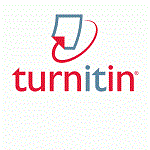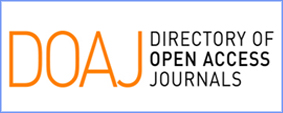Argumentasi Siswa Dalam Pembuktian Konjektur
Abstract
Keywords
Full Text:
PDFReferences
Aberdein, A. (2012). The parallel structure of mathematical reasoning. In The argument of mathematics (pp. 351–370). citeulike-article-id:12227960%5Cnhttp://www.worldcat.org/oclc/818963739
Alcock, L., & Weber, K. (2010). Referential and syntactic approaches to proving: Case studies from a transition-to-proof course. 1711553, 93–114. https://doi.org/10.1090/cbmath/016/04
Aricha-Metzer, I., & Zaslavsky, O. (2017). The nature of students’ productive and non-productive example-use for proving. Journal of Mathematical Behavior, 53, 304–322. https://doi.org/10.1016/j.jmathb.2017.09.002
Ayalon, M., & Even, R. (2008). Deductive reasoning: In the eye of the beholder. Educational Studies in Mathematics, 69(3), 235–247. https://doi.org/10.1007/s10649-008-9136-2
Chartrand, G., Polimeni, A. D., & Zhang, P. (2018). Mathematical proofs : a transition to advanced mathematics.
Chazan, D. (1993). High school geometry students’ justification for their views of empirical evidence and mathematical proof. Educational Studies in Mathematics, 24, 359–387.
Christou, C., & Papageorgiou, E. (2007). A framework of mathematics inductive reasoning. Learning and Instruction, 17(1), 55–66. https://doi.org/10.1016/j.learninstruc.2006.11.009
Clark, D. B., Sampson, V., Weinberger, A., & Erkens, G. (2007). Analytic frameworks for assessing dialogic argumentation in online learning environments. Educational Psychology Review, 19(3), 343–374. https://doi.org/10.1007/s10648-007-9050-7
Conner, A. M., Singletary, L. M., Smith, R. C., Wagner, P. A., &
Francisco, R. T. (2014). Teacher support for collective argumentation: A framework for examining how teachers support students’ engagement in mathematical activities. Educational Studies in Mathematics, 86(3), 401–429. https://doi.org/10.1007/s10649-014-9532-8
de Villiers, M. (1990). The role and function of proof in Mathematics. Pythagoras, 24(November 1990), 17–23.
Erduran, S., Simon, S., & Osborne, J. (2004). TAPping into argumentation: Developments in the application of Toulmin’s Argument Pattern for studying science discourse. Science Education, 88(6), 915–933. https://doi.org/10.1002/sce.20012
Hakyolu, H., & Ogan-Bekiroglu, F. (2016). Interplay between content knowledge and scientific argumentation. Eurasia Journal of Mathematics, Science and Technology Education, 12(12), 3005–3033. https://doi.org/10.12973/eurasia.2016.02319a
Hales, T. (2008). Formal proof. Notices of the AMS, 55(11), 1370–1380.
Healy, L., & Hoyles, C. (2000). A study of proof conceptions in algebra. Journal for Research in Mathematics Education, 31(4), 396–428. https://doi.org/10.2307/749651
Inglis, M., Mejia-Ramos, J. P., & Simpson, A. (2007). Modelling mathematical argumentation: The importance of qualification. Educational Studies in Mathematics, 66(1), 3–21. https://doi.org/10.1007/s10649-006-9059-8
Knipping, C. (2004). Argumentation structures in classroom proving situations. European Research in Mathematics Education III, 1–9.
Knipping, Christine, & Reid, D. A. (2016). Argumentation Analysis for Early Career Researchers. In G. Kaiser & N. Presmeg (Eds.), Compendium for Early Career Researchers in Mathematics Education (pp. 3–32).
Kosko, K. W., & Zimmerman, B. S. (2019). Emergence of argument in children’s mathematical writing. Journal of Early Childhood Literacy, 19(1), 82–106. https://doi.org/10.1177/1468798417712065
Laamena, C. M., Nusantara, T., Irawan, E. B., & Muksar, M. (2018). How do the Undergraduate Students Use an Example in Mathematical Proof Construction: A Study based on Argumentation and Proving Activity. International Electronic Journal of Mathematics Education, 13(3), 185–198. https://doi.org/10.12973/iejme/3836
Lakatos, I. (1976). Proofs and refutations. The logic of mathematical discovery. Cambridge University Press.
Leron, U., & Zaslavsky, O. (2013). Generic proving: Reflections on scope and method. For the Learning of Mathematics, 33(3), 24–30. https://doi.org/10.1515/9781400865307-017
Mason, J., & Pimm, D. (1984). Generic examples: Seeing The General in The Particular. Educational Studies in Mathematics, 2(231–250).
Mills, M. (2014). A framework for example usage in proof presentations. Journal of Mathematical Behavior, 33, 106–118. https://doi.org/10.1016/j.jmathb.2013.11.001
Pedemonte, B. (2001). Some Cognitive Aspects of the Relationship between Argumentation and Proof in Mathematics. In M. van den Heuvel-Panhuizen (Ed.), Proceeding of the 25th conference of the international group for the Psychology of Mathematics Education PME-25 (pp. 33–40).
Pedemonte, Bettina. (2007). How can the relationship between argumentation and proof be analysed? Educational Studies in Mathematics, 66(1), 23–41. https://doi.org/10.1007/s10649-006-9057-x
Rø, K., & Arnesen, K. K. (2020). The opaque nature of generic examples: The structure of student teachers’ arguments in multiplicative reasoning. Journal of Mathematical Behavior, 58(December 2019), 100755. https://doi.org/10.1016/j.jmathb.2019.100755
Siswono, T. Y. E., Hartono, S., & Kohar, A. W. (2020). Deductive or inductive? prospective teachers’ preference of proof method on an intermediate proof task. Journal on Mathematics Education, 11(3), 417–438. https://doi.org/10.22342/jme.11.3.11846.417-438
Tall, D., & Mejia-Ramos, J. P. (2010). The long-term cognitive development of reasoning and proof. Explanation and Proof in Mathematics: Philosophical and Educational Perspectives, due, 137–149. https://doi.org/10.1007/978-1-4419-0576-5_10
Uğurel, I., Morah, S., Koyunkaya, M. Y., & Karahan, O. (2016). Pre-service Secondary Mathematics Teachers’ Behavior in the Proving Process. Eurasia Journal of Mathematics, Science and Technology, 12(2), 203–231.
Watson, A., & Mason, J. (2005). Mathematics as a constructive activity: Learners generating examples. Erlbaum.
Yopp, D. A., & Ely, R. (2016). When does an argument use a generic example? Educational Studies in Mathematics, 91(1), 37–53. https://doi.org/10.1007/s10649-015-9633-z
Yopp, D. A., Ely, R., & Johnson-Leung, J. (2015). Generic example proving criteria for all. For the Learning of Mathematics, 35(3), 8–13.
Article Metrics
Abstract has been read : 1008 timesPDF file viewed/downloaded: 0 times
DOI: http://doi.org/10.25273/jipm.v10i2.8903
Refbacks
- There are currently no refbacks.
Copyright (c) 2021 JIPM (Jurnal Ilmiah Pendidikan Matematika)

This work is licensed under a Creative Commons Attribution-ShareAlike 4.0 International License.
View JIPM Stats
JIPM indexed by:
Copyright of JIPM (Jurnal Ilmiah Pendidikan Matematika) ISSN 2502-1745 (Online) and ISSN 2301-7929 (Print)













